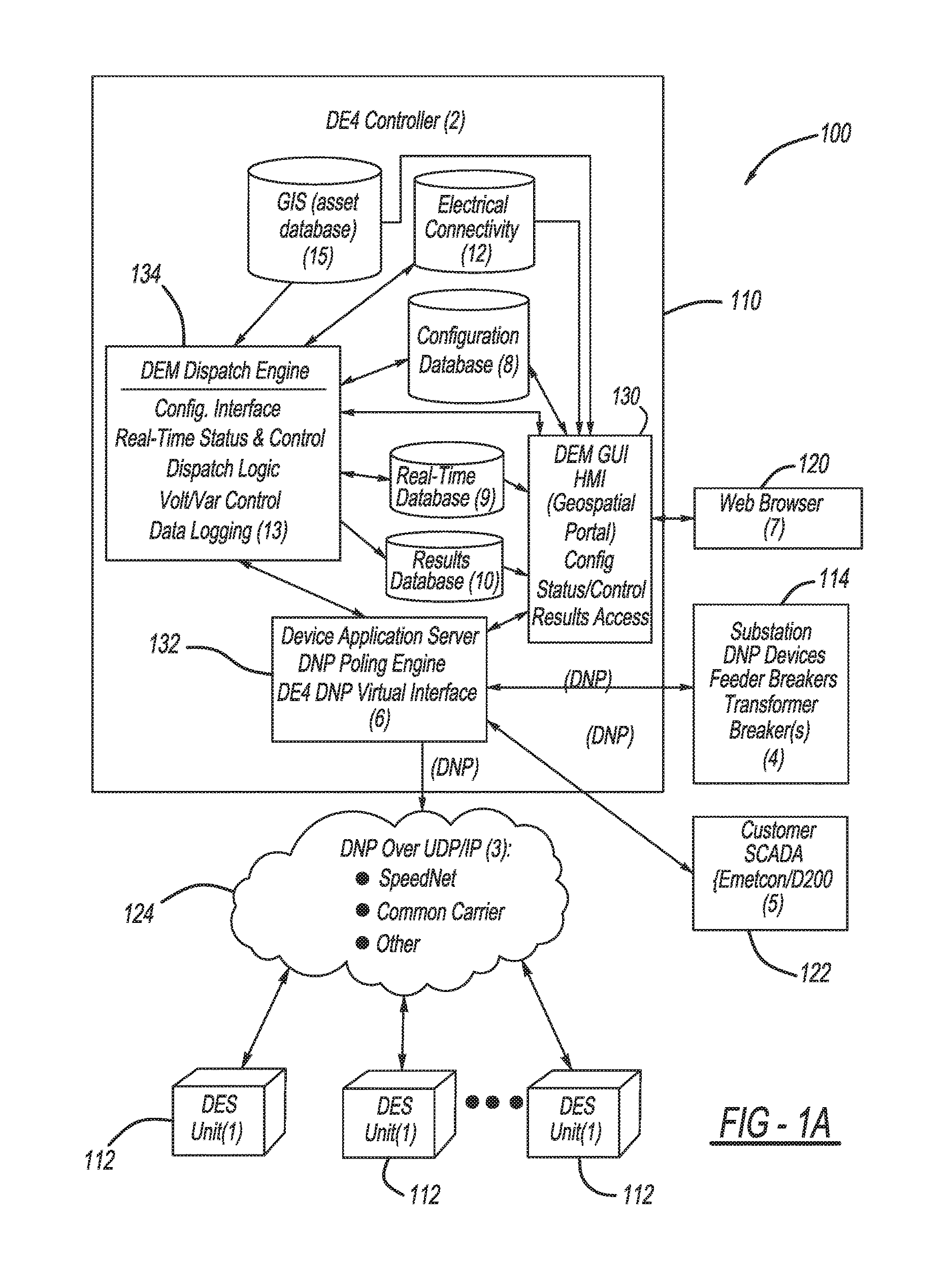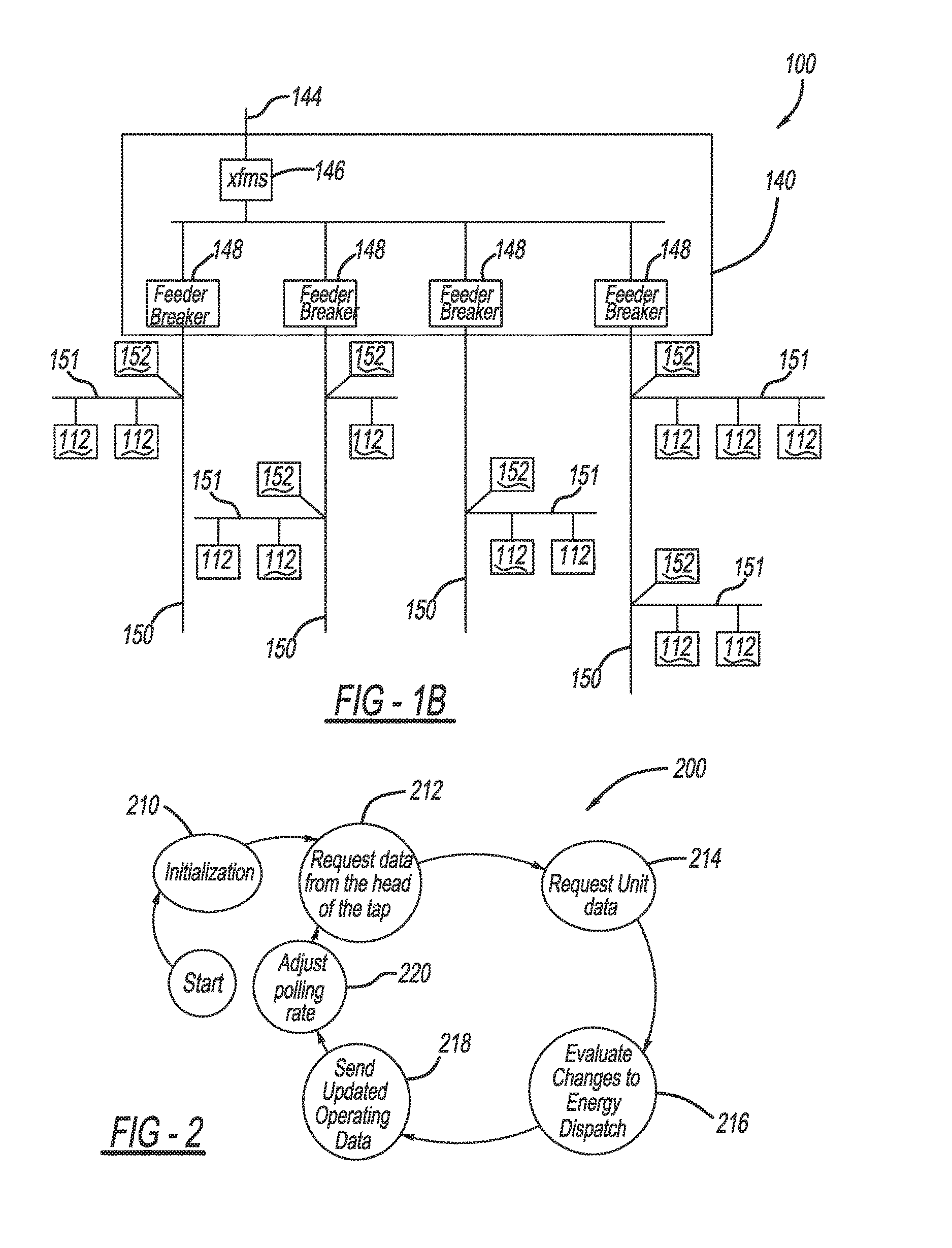Adaptive polling in energy distribution systems
a technology of energy distribution system and polling system, applied in the direction of computer control, data switching network, instruments, etc., can solve the problems of unreliable communication, low bandwidth, and high operating cost, and achieve the effect of facilitating the connection of various renewable energy sources
- Summary
- Abstract
- Description
- Claims
- Application Information
AI Technical Summary
Benefits of technology
Problems solved by technology
Method used
Image
Examples
Embodiment Construction
[0011]Methods of controlling distribution of energy within an energy distribution system and energy distribution systems are provided. An energy distribution system includes a central controller and one or more remote distribution control units. In one embodiment, a method includes obtaining, with the central controller from the remote distribution control unit, operational data indicating an operational condition of the energy distribution system. The method further includes comparing the operational condition to a polling rate threshold that indicates when the operational condition is approaching a condition threshold at which the central controller will actively control operation of the remote distribution control unit. The method further includes adjusting a polling rate at which the operational data is obtained in response to the operational condition crossing the polling rate threshold. The method yet further includes polling the remote distribution control unit with the centr...
PUM
 Login to View More
Login to View More Abstract
Description
Claims
Application Information
 Login to View More
Login to View More - R&D
- Intellectual Property
- Life Sciences
- Materials
- Tech Scout
- Unparalleled Data Quality
- Higher Quality Content
- 60% Fewer Hallucinations
Browse by: Latest US Patents, China's latest patents, Technical Efficacy Thesaurus, Application Domain, Technology Topic, Popular Technical Reports.
© 2025 PatSnap. All rights reserved.Legal|Privacy policy|Modern Slavery Act Transparency Statement|Sitemap|About US| Contact US: help@patsnap.com



